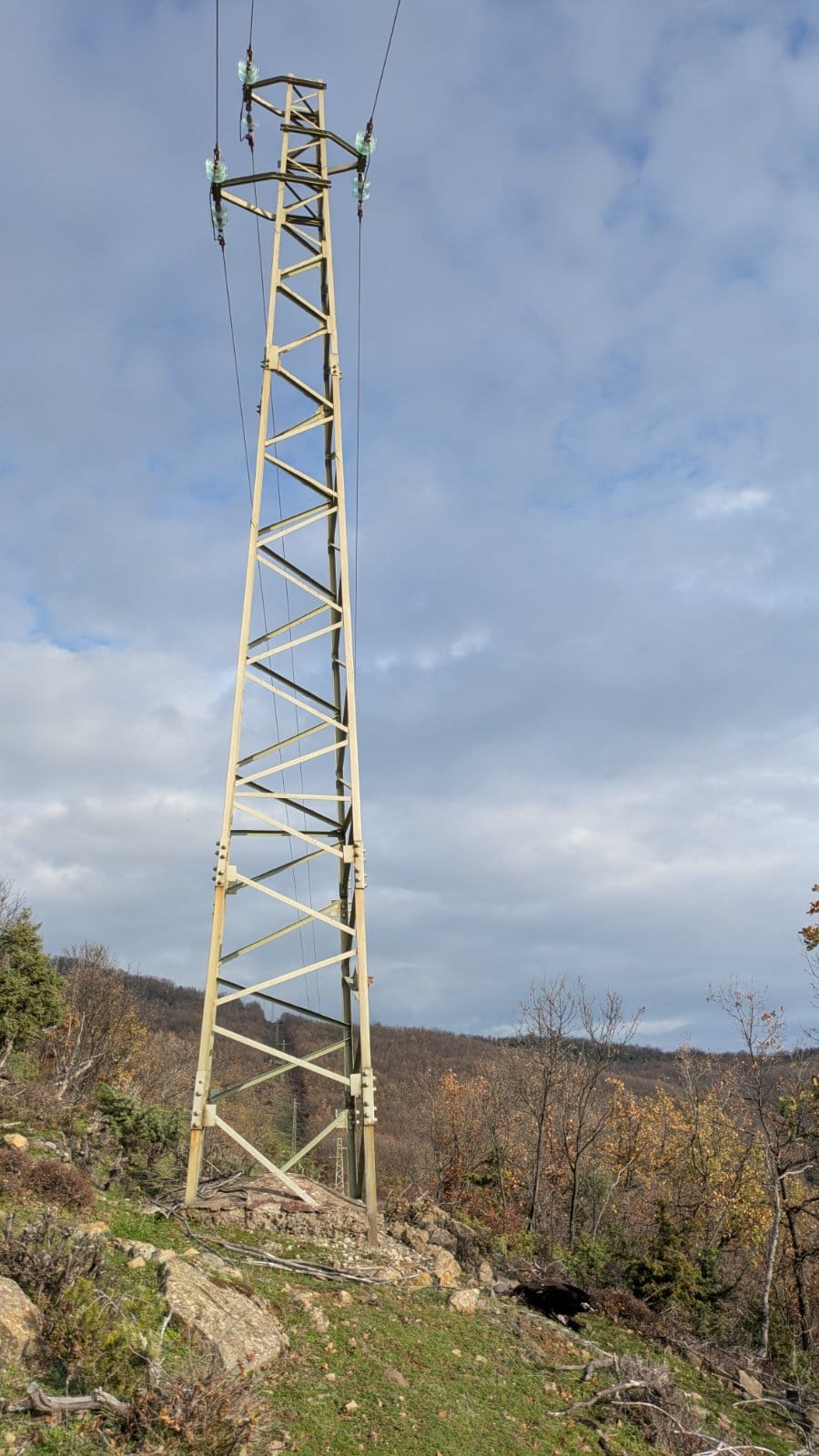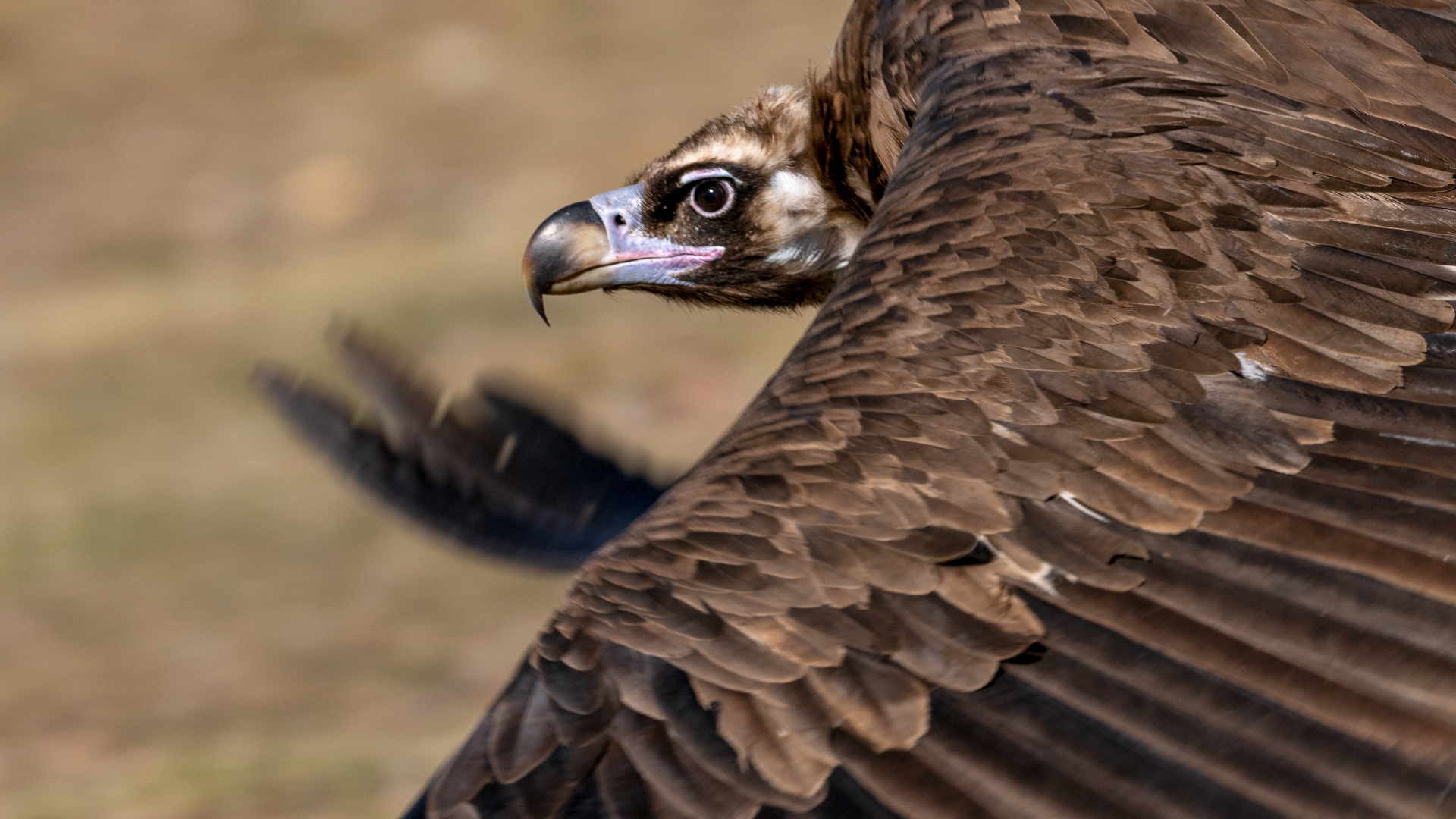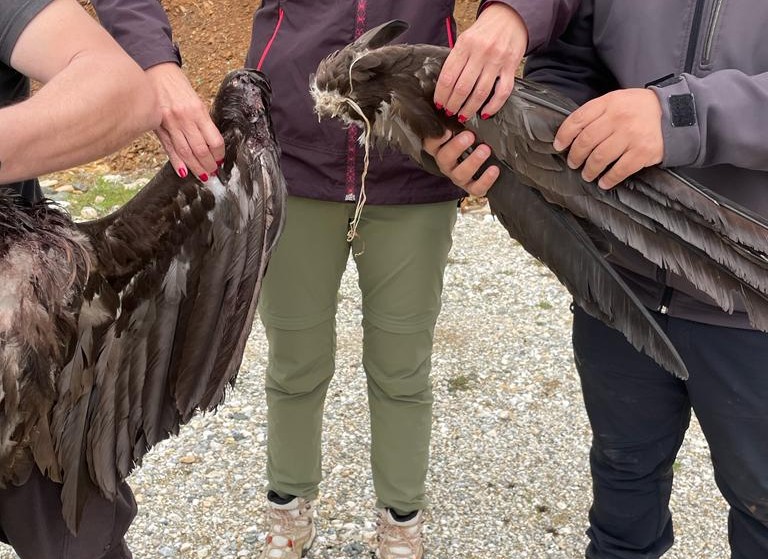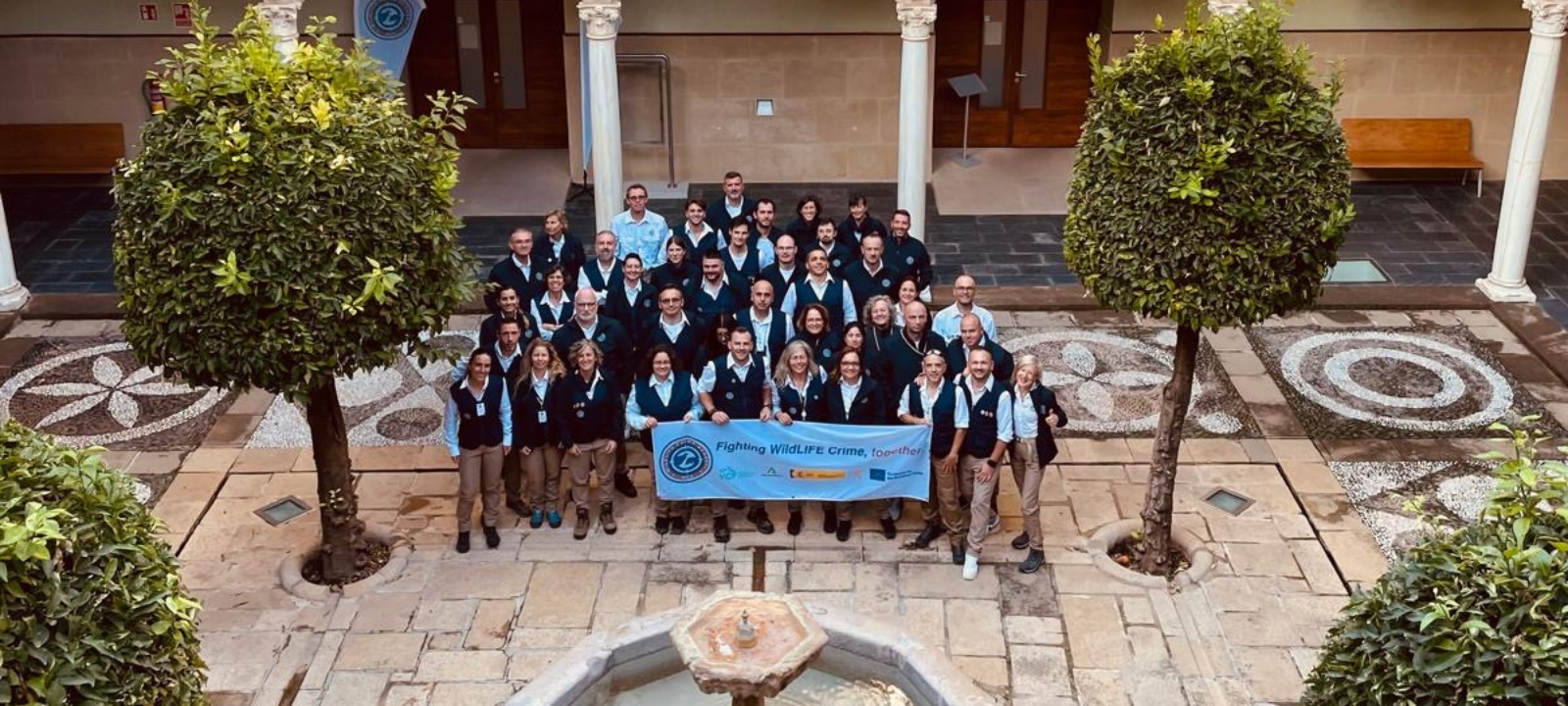In Portugal, the LIFE Aegypius Return project has been tracking the movements of dozens of Cinereous vultures (Aegypius monachus) and identified behaviours that suggest unexpected social bonds between some individuals. These are singular stories that show how friendship can emerge where it is least expected.

Friendship beyond humanity
Friendship is not exclusive to humans. Other animals are also capable of forming strong and lasting bonds that go far beyond simple cooperation. Scientific research shows that what we call “friendship” – a voluntary and enduring relationship, often without immediate benefits – also exists in the animal world.
Among humans, friendship is essential to health and well-being, strengthening cooperation, resilience in the face of difficulties and even survival itself. And, as in us, other social species also display selective and unconditional bonds – that is, connections formed without any perceptible practical advantage.
Discover some examples of special relationships documented in bird species:
- Egyptian vultures (Neophron percnopterus)
- Griffon Vultures (Gyps fulvus)
- Siskins (Carduelis spinus)
- Bee-eaters (Merops apiaster)
- Superb satrlings (Lamprotornis superbus)
- European starlings (Sturnus vulgaris)
- Siberian jays (Perisoreus infaustus)
What do vultures tell us?
The benefits of cooperation among vultures are well documented. Griffon Vultures act as sentinels in detecting carcasses, benefitting the whole group. Bearded Vultures, in turn, sometimes form reproductive units of three or four individuals, which brings advantages in sharing parental care. These behaviours demonstrate a level of social complexity that implies familiarity and trust between individuals, similar to friendship. Yet unconditional friendship – a lasting bond that goes beyond survival needs – is much harder to identify and prove.
In Portugal, some Cinereous Vultures monitored via GPS transmitters as part of the LIFE Aegypius Return project have shown unusually close behaviour, suggesting affinities stronger than mere territorial coexistence. We cannot prove the unconditional nature of these bonds, but we can certainly observe a striking closeness.
Almeirão and Arçã: the inseparables
The two met in November 2023 at CERAS (the Centre for the Study and Recovery of Wild Animals, run by Quercus in Castelo Branco).
Arçã was rescued in Évora when she was just over a year old and in a weakened state. After being treated at CARAS (the Wildlife Rehabilitation Centre managed by the League for the Protection of Nature – LPN) in the same city, she was transferred to Castelo Branco, where Almeirão, a male, was already recovering. Also born in 2022, he had been rescued that September in Belmonte and rehabilitated at CERAS.
CERAS was the common home of these young vultures until May 2024, when they were transferred to the acclimatisation station in Douro International. In November that year, they were (soft) released and have been inseparable ever since.
GPS data and field observations show that they continue to roam the Douro valley, making regular visits to Spain, almost always side by side. They fly, feed and perch in synchrony, as if one mirrored the other.
Very recently, they have begun to exhibit behaviours that may indicate the beginning of nest-building activity. They are still young, but perhaps their bond goes beyond friendship…
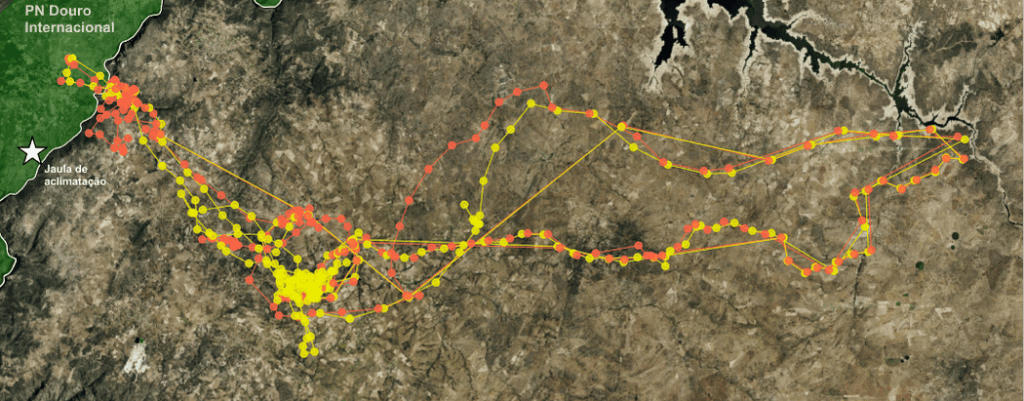
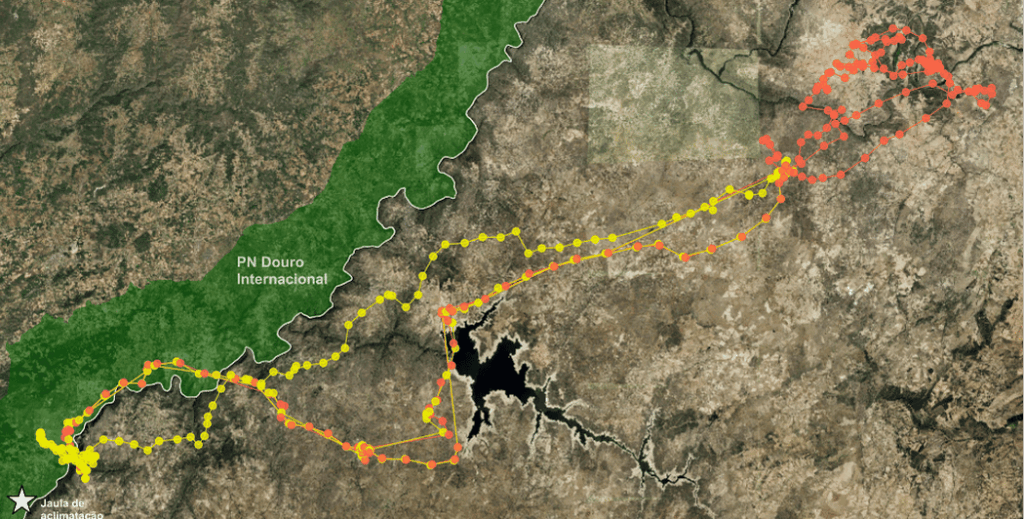
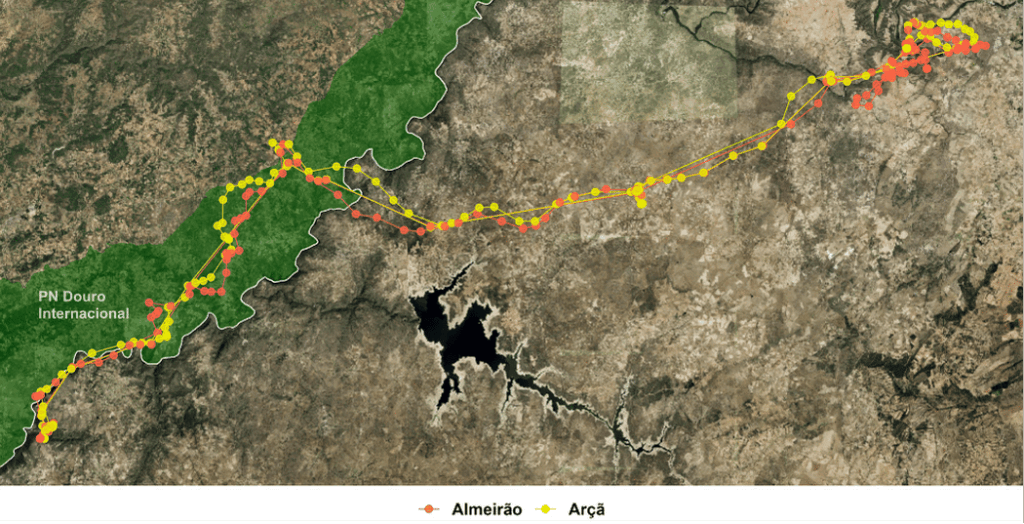
Synchronous movements of Cinereous Vultures Almeirão (orange) and Arçã (yellow) on 27/04/2025, 05/06/2025 and 20/07/2025.
Farrobo and Vidigueira
Not all friendships have romantic motivations. Farrobo and Vidigueira – respectively a male and a female – are the only surviving chicks from this year’s breeding season in the recently established Vidigueira/Portel colony.
Their GPS data show that, since they began to fly, they have remained close to one another and to the colony. And, like the Douro pair, they sometimes fly, perch and feed in complete synchrony.
It will be several years before they reach sexual maturity, so what unites them for now seems to be simple friendship – perhaps a form of learning and mutual safety as they explore the world together.

Beyond instinct
Scientific caution prevents researchers from attributing feelings to animal behaviour. However, the observed patterns are undeniable.
Whether these bonds are the result of shared experiences in captivity, survival instinct, a social tendency, or a closer affinity, they reveal that vultures have personality and an unexpected side to a species generally (and unfairly) connoted with negative characteristics.
These stories also bring a new perspective to the importance of technology and remote monitoring, which now allows to uncover social dimensions previously overlooked in conservation studies.

About LIFE Aegypius Return

The LIFE Aegypius Return project is co-financed by the European Union’s LIFE programme. Its success depends on the involvement of all the relevant stakeholders, and the collaboration of the partners: the Vulture Conservation Foundation (VCF), the coordinating beneficiary, and the local partners Palombar – Conservação da Natureza e do Património Rural, Herdade da Contenda, Sociedade Portuguesa para o Estudo das Aves, Liga para a Protecção da Natureza, Associação Transumância e Natureza, Fundación Naturaleza y Hombre, Guarda Nacional Republicana and Associação Nacional de Proprietários Rurais Gestão Cinegética e Biodiversidade.

